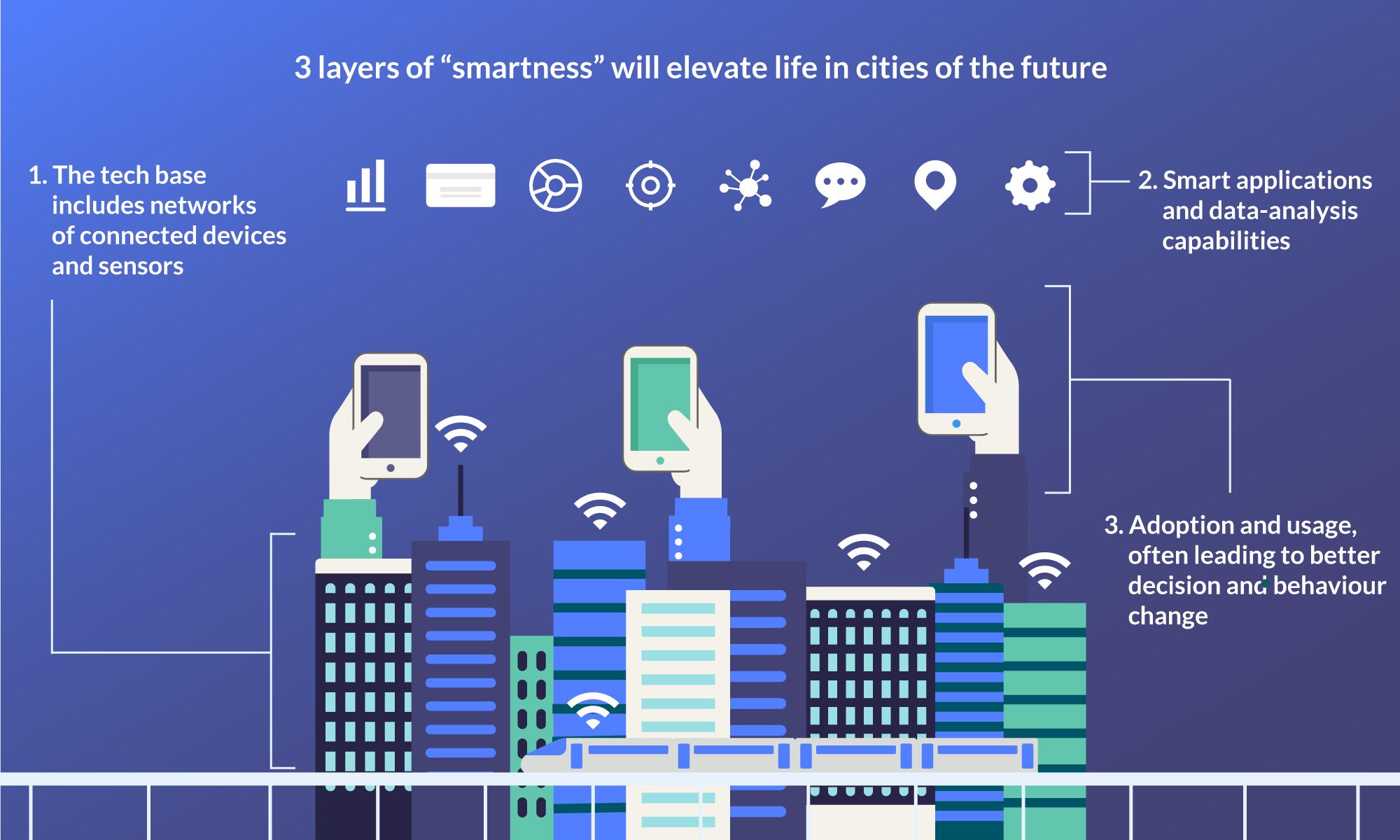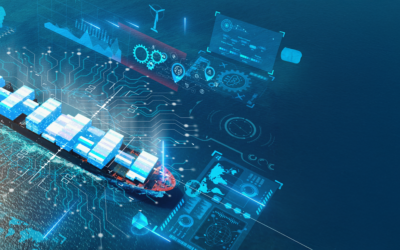Smart Cities and the Internet of Things: Implications for Urban Planning
5 min read
Summary:
In this insightful read, we’ll explore the origins and evolution of the smart city concept, discuss its benefits and challenges, and provide real-world examples of how smart city technologies are improving the quality of life for city residents.
What are smart cities?
Smart city technology has been a hot topic recently as cities worldwide continue to grow and face new challenges. A smart city is an urban area that uses the Internet of Things (IoT), smart sensors, and other advanced technologies to manage and optimize urban services, infrastructure, and overall quality of life.
Using IoT devices and real-time data, urban planners can design and implement more efficient, sustainable, and intelligent city plans.
The history of the term
From the advanced cityscape in Fritz Lang’s “Metropolis” to the flying cars and towering skyscrapers in “The Jetsons,” the origins of a smart city have been present in literature, science fiction, films, and comic books long before the term gained traction.
With the advent of the Internet of Things, advances in data analytics, and an increasing focus on sustainable urban development, these once far-fetched ideas have become tangible realities.
The term “smart city” gained popularity in the mid-2000s, when tech giants such as IBM and Cisco began promoting urban solutions that leveraged the power of IoT and data analytics. These solutions addressed the challenges of rapid urbanization, population growth, and environmental sustainability.
Since then, the smart city movement has grown exponentially. As a result, cities worldwide are implementing various innovative city initiatives to improve their urban environments.
So, what makes a city smart?
A city is considered “smart” when it effectively uses technology, IoT devices, and data analytics to optimize its services, infrastructure, and the quality of life of its residents. This way, smart cities can create a more sustainable, efficient, and enjoyable urban environment that meets the population’s changing needs.
The key elements that make a city smart include:
Connectivity: A robust, high-speed communications network that enables seamless data exchange between IoT devices, urban systems, and residents.
IoT devices and sensors: Smart sensors and IoT devices collect data from multiple sources, such as traffic, energy consumption, and air quality.
Data analytics: Data collected by IoT devices is analyzed to provide actionable insights to decision-makers and urban planners.
Integration: Smart city solutions are integrated into existing urban systems to enable them to function harmoniously and provide more efficient services.
Citizen participation: Residents play an active role in shaping smart city initiatives through feedback and engagement.
Improved Quality of life: Better access to essential services, a cleaner and greener environment, efficient transportation systems, and a greater emphasis on sustainability.
Smart grids and energy management: Smart grids optimize energy consumption and reduce waste and pollution.
Smart water management: IoT systems monitor water consumption, detect leaks and optimize resource allocation.
E-governance & citizen services: Digital platforms ensure transparent administration and improve citizen experience by drastically reducing bureaucracy.
Smart mobility and traffic management: IoT sensors and real-time data improve traffic flow and reduce congestion by adapting to changing traffic patterns.
Public safety and emergency response: IoT devices improve safety and enable effective emergency response.
Smart urban planning: Data analysis enables efficient, sustainable, and people-friendly urban planning and provides valuable insights into how people interact with their environment.
Benefits of Smart Cities and IoT
IoT smart city initiatives offer numerous benefits to urban areas, including improved quality of life, greater efficiency, and increased safety.

Life quality improves
One of the main goals of smart city technology is to improve the quality of life for residents. IoT devices can contribute to this by improving various aspects of urban life, such as transportation systems, public safety, and overall economic development.
For example, smart mobility solutions such as smart parking and traffic management systems can reduce congestion, save time, and reduce pollution. In addition, smart waste management and smart building technologies contribute to a cleaner and greener urban environment.
Things become more efficient
Efficiency is another important aspect of smart city initiatives. By leveraging real-time data, open data, and IoT devices, city management systems can make more informed decisions and use resources more effectively.
Smart sensors, for example, can monitor energy consumption in real time, allowing utilities to optimize power distribution and avoid blackouts. In addition, urban planners can use this information to improve the planning process and create more sustainable urban designs.
Security is paramount
Public safety is a top priority in any city, and smart city technology can improve it. For example, IoT devices such as smart cameras and sensors can help detect and prevent crime, natural disasters, and other threats. In addition, real-time data collected by these devices can be used to improve emergency response times and overall public safety strategies.
There are some challenges, though
While smart cities have immense potential, they also face several challenges that must be addressed. These challenges include cost, privacy and security, and interoperability.
It costs some serious money
Implementing smart city initiatives can be expensive, requiring significant investments in infrastructure, IoT devices, and management systems. This can be incredibly challenging for cities with limited budgets or rapid population growth.
However, the long-term benefits of smart cities, such as increased efficiency and improved quality of life, can outweigh the initial costs.
Privacy and security issues arise
As cities become increasingly connected through IoT and smart city technologies, privacy and security concerns naturally arise. The vast amounts of data collected and shared by IoT devices can be misused or accessed by unauthorized parties.
To address these issues, cities must implement robust privacy measures and invest in advanced security technologies to protect the privacy of their citizens.
How does it all work together?
Interoperability is another major challenge for smart cities. With a multitude of IoT devices and systems from different vendors, seamless integration and communication can be a complex task.
Therefore, cities need to adopt common standards and protocols to ensure that their smart city technologies can work together harmoniously and maximize the benefits they provide.
The future is bright
As cities continue to evolve, smart city technologies and IoT will play an increasingly important role in shaping the future of urban planning. By leveraging these innovations, cities can improve the quality of life for their residents, increase efficiency, and enhance public safety.
And as we progress, governments, private companies, and citizens must work together to overcome the challenges and seize the opportunities that smart city technology presents.
Through collaboration and innovation, we can create a more sustainable, connected, and prosperous future for our urban areas and ensure they remain vibrant and thriving centers of economic development and cultural exchange.
At InnoBoost, we’re honored to be at the forefront of this monumental period in history. As a company that prides itself on taking a holistic approach to the data lifecycle, we’re ideally positioned to offer a full implementation of IoT technology while addressing a variety of challenges associated with IoT, particularly in the areas of security and interoperability.
AnotherTrack — a data acquisition and mediation platform — is an InnoBoost product designed to easily implement and scale all use cases related to smart cities. It covers the entire data lifecycle, from creation (at the edge, for example) through processing to sharing or publishing, with storage and security considered at every stage. The platform is already equipping retailers in Switzerland with smart stores, enabling them to consistently track advertising campaigns and optimize their customer service both online and offline.
So let’s harness the power of IoT and smart city technologies to shape tomorrow’s urban landscapes and create a better world for all!
Contact us to schedule an appointment and learn more about how IoT can help your business.
You may also like…
Unlocking the Power of Custom AI with InstructLab
5 min readSummary In the dynamic landscape of artificial intelligence, the ability to create models tailored to unique business needs is more than a competitive edge—it's a necessity. InstructLab, a collaborative initiative from IBM and Red Hat, is revolutionizing AI...
Strengthening Authentication in the Digital Age with IBM Verify
5 min readSummary In today’s interconnected world, the importance of robust authentication systems cannot be overstated. As digitalization accelerates, safeguarding sensitive data and critical systems has become a top priority for businesses. Effective access...
From Data Chaos to Data Confidence: Real-World Use Cases of IBM Data Product Hub
5 min readSummary In a world where data streams in from every direction—transactions, patient records, supply chain logs, and more—businesses often face “data chaos.” Instead of powering innovation, their data sits scattered in different formats and systems, making it...




